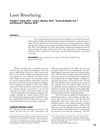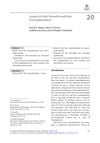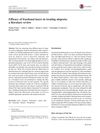Post Acne Scarring: A Review
January 2003
in “
Journal of cosmetic and laser therapy
”
CO2 laser erbium infrared laser dermasanding non-ablative resurfacing radiofrequency resurfacing dermal augmentation subcutaneous augmentation autologous tissue augmentation non-autologous tissue augmentation tissue undermining punch techniques silastic sheeting vascular laser intralesional cytotoxics carbon dioxide laser erbium laser dermabrasion RF resurfacing dermal fillers subcutaneous fillers autologous fillers non-autologous fillers punch excision silicone sheeting vascular laser treatment intralesional chemotherapy
TLDR New techniques have improved acne scar treatment, but multiple tailored sessions are often needed.
Historically, post acne scarring was difficult to treat, but new and modified techniques have improved management. Treatment must be tailored to the patient's expectations and the specific scar morphology, which can include superficial macules, dermal troughs, ice picks, multi-channelled fistulous tracts, and subcutaneous atrophy. New methods such as CO(2) and erbium infrared lasers, dermasanding, and future techniques like non-ablative and radiofrequency resurfacing have shown promise. Dermal and subcutaneous augmentation, including autologous and non-autologous tissue augmentation, and tissue undermining have significantly improved atrophic scar treatment. Punch techniques are necessary for sharply marginated scars like ice picks. While many treatments can be done in a single session, repeat treatments are often needed. Hypertrophic acne scarring remains challenging, but new developments like silastic sheeting, vascular laser, and intralesional cytotoxics offer potential improvements. Multiple treatments and modalities are often required for adequate improvement, especially for extra-facial and male patients.



